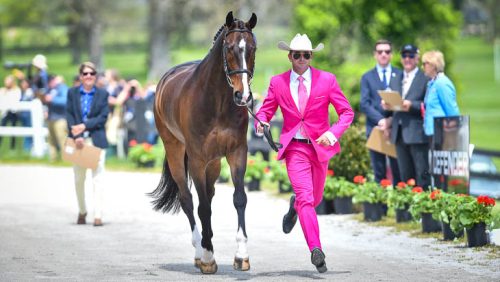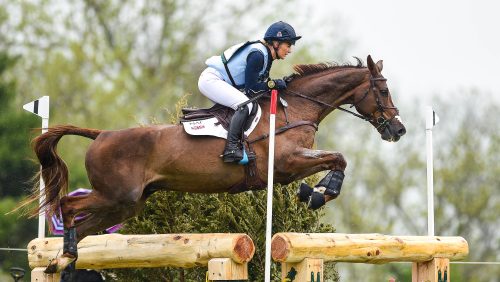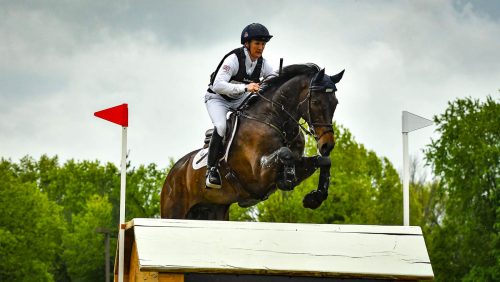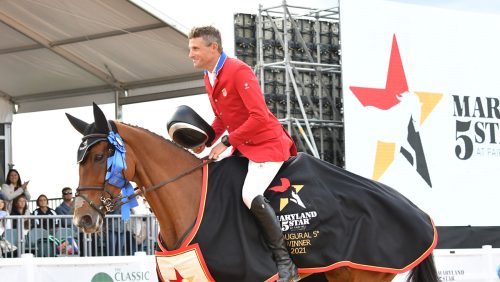In late Autumn it gets dark and cold early in Lincoln, R.I., and by the time Joe McLaughlin and I pulled into Lincoln Downs one day in early December, 1961, the track was black except for a few flickering bulbs which did little to dispel the murk along the partially deserted shed row on the back side of the racetrack.
Our mission was to buy a few young Thoroughbreds for the McLaughlin’s Hitching Post Farm summer riding camp. Joe and I had left South Royalton, Vt., at an equally dark 5 a.m. that Saturday morning. All day we’d looked in vain for suitable youngsters, and now, on a tip, we were meeting a trainer with a 4-year-old for sale. It would be our last stop of a long day.
The colt, improbably named Pink Card, by a stallion named Post Card and out of a mare named Pink Bow, was dark brown and skinny, with a shaggy winter coat, but he trotted down the shed row straight, true and sound. His legs were clean, and if you could look through the hair and the lack of nutrition, he seemed to be structurally correct.
“How much?” Joe asked. “$500” was the reply.
Joe and the trainer talked of this and that for several more minutes while I stood shivering in a wind that was blowing in from the icy Atlantic.
“Well, I guess I can’t use him for that money,” Joe said.
“I can’t let him go for any less,” replied the trainer. “I’ve got way more than that in him.”
The two men shook hands, and we climbed into our car, the trainer into his, and the doors clunked shut.
“Gee, Joe, he’s a nice colt. $500 is OK, I’d have thought,” said I.
Joe held up a restraining hand. “Wait a minute,” he said.
Down the shed row, the interior lights went on in the trainer’s car, as he opened the door. The lights in Joe’s car came to life as he stepped out to continue the negotiations. Some minutes later Pink Card had passed into Joe’s possession for $275.00.
The Thoroughbred Thoroughly Dominated
ADVERTISEMENT
If the Chronicle had published an American Horses In Sport issue half a century ago, the overwhelming majority of the hunters, jumpers and event horses in the competition arenas of America would have arrived at those places as a result of negotiations similar to the one I just described.
Thoroughbred domination seemed secure throughout the 1960s and ’70s, and even into the 1980s when the small Thoroughbred mare Touch Of Class won the show jumping gold medal at the 1984 Olympic Games in Los Angeles.
But a sea change was brewing, and in the next quarter century it would turn into a tidal wave, sweeping the pure Thoroughbreds out and raking horses from England, Ireland, Australia, New Zealand and Continental Europe in.
By no means was the day of the full Thoroughbred finished, but that breed’s total domination of sport, previously unchallenged, was on the wane.
When registered Thoroughbreds like Bally Cor, Good Mixture, Better And Better and Might Tango won gold and silver medals in eventing, it wasn’t because they’d been bred to do so, but by genetic accident. They’d been bred to win races on a flat track.
When Snowbound, Fleet Apple, Touch Of Class, Out Late and Aberali were dominating world show jumping, it was by quirky twists of fate, not design. They, too, had been bred to race.
At the heart of the American sport horse buyer’s dilemma was this inescapable fact. If you found a Thoroughbred which had all the qualities that you would need for sport—soundness, temperament, jumping ability, movement, athleticism—those qualities were subsidiary to the purpose for which that horse had been bred, the ability to win races.
In those days, the buyer had to find the requisite sport horse qualities by winnowing through large numbers of still relatively sound young Thoroughbreds that had failed at the job they’d been bred to do. There was no breeding consistency. Instead, there was random luck of the draw.
Moreover, other forces were at work within the Thoroughbred industry itself, the most troubling to a sport horse buyer being the changing nature of the actual horses being delivered from the Thoroughbred nurseries to the American race tracks. Because of several economic and demographic shifts, the emphasis in the racing industry was changing from 3-year-old racing at distances of a mile or more to 2-year-old racing at five, six and seven furlongs. Smaller, chunkier Quarter Horse types seem to produce precocious short speed, whereas sport horse buyers preferred taller, rangier horses, the kinds associated with longer distances and longer racing careers.
The “pillars of the turf,” old families like the Mellons, Vanderbilts, Phippses, Whitneys and Guests, who had grown up riding, showing and foxhunting and who bred a “Munnings print” stamp of classic Thoroughbred, were being joined and eventually superseded by “new wealth” breeders, whose bottom line was a quick return on investment rather than to win the archaic 11⁄2-mile Belmont Stakes.
The European Influence
In eventing, by the mid 1980s, we began to see more of an Irish Draught influence, the result of American buyers at the top of the market buying horses from Ireland and England which tended to be 3⁄4 to 7⁄8 Thoroughbred and 1⁄4 to 1⁄8 registered Irish Draught. These horses seemed more custom bred for the sport, horses like Wilton Fair, Eagle Lion, Prince Panache, Custom Made, Inniscarra and Biko.
ADVERTISEMENT
Stronger, generally, than the racing Thoroughbred, and built more uphill, they often had better hooves than the stereotypically shelly Thoroughbred feet, and they were apt to have good temperaments—a heritage, perhaps, from their milk cart pulling, foxhunting Irish granddams.
At the same general time that Irish blood was seeping into the eventing gene pool, warmbloods bred specifically to jump were being imported from Germany, Holland, France and Belgium for the large U.S. hunter/jumper market.
Both Terry Rudd and Tiff Teeter remember the Paul Schockemohle auctions in Newport, R.I., in the early ’80s, where U.S. jumping riders were being targeted as prime customers by canny European breeders.
As Michael Matz rode Grande and Katharine Burdsall rode the million-dollar The Natural to grand prix success, the warmblood trickle became a tide, and the tide became a flood. It’s difficult today to find a full Thoroughbred in the top open jumper ranks, and even the hunter and equitation divisions are filled with warmbloods, where Thoroughbreds used to rule.
In 1982, when I was riding at Stall Tasdorf, a dressage training center run by Walter Christensen near Neumünster, Germany, Walter told me that two inventions had revolutionized European warmblood breeding. The first of these was the horse trailer. Prior to its use, the stallion either had to walk to the mare, or the mare had to walk to the stallion, so choice was limited to local availability. The second was the Equitainer, the “baby in a bucket,” which allowed breeders enormous latitude in stallion selection. (Frozen semen and Internet shopping, complete with instant stallion videos, continues this revolution in 2011.)
On the eventing side, when the Fédération Equestre Internationale changed the sport from one based on speed and endurance into a sport based more upon technical skills, this opened the breeding door to a greatly increased warmblood presence.
In Volume 40, the 2011 winter issue of the U.S. Eventing Association’s magazine, Eventing USA, there are two articles on the breeding and production of young event horses, “Head of the Class,” and “Youth of the Nation.” Study these articles and see how many of the top young American event horses are at least half European warmblood. We don’t know whether the World and Olympic superstars of the future will reflect this warmblood trend, but the current trend is surely away from full Thoroughbreds and even away from the traditional Thoroughbred-registered Irish Draught crossbred. Crossbreeding, which incorporates European warmblood lines specifically developed for jumping and dressage, is the new reality.
When I was walking down that cold, dimly lit shed row at Lincoln Downs in 1961, I didn’t know that I was on the crest of a Thoroughbred wave that was breaking even as we were riding those “race track rejects” to victory after victory on the international stage. Through several metamorphoses since that era, many of our horses still trace back, at least in some remote part, to the famous old blood. I looked up Pink Card’s breeding. His dam, Pink Bow, was a granddaughter of Man O’ War.
This year, which will be my 50th consecutive season in eventing, my preliminary horse, Union Station, raced before he evented. He, like Pink Card, a horse I schooled half a century ago, traces back several times to Man O’ War. For all that most things change, some constants remain.
Denny Emerson rode on the 1974 World Championship gold-medal eventing team. He served as the U.S. Eventing Association president twice and won the USEA Wofford Cup for his lifetime dedication to eventing. At his Tamarack Hill Farm in South Strafford, Vt., and Southern Pines, N.C., he trains horses and riders and stands stallions. An original Between Rounds contributor, Emerson began writing his column in 1989.















